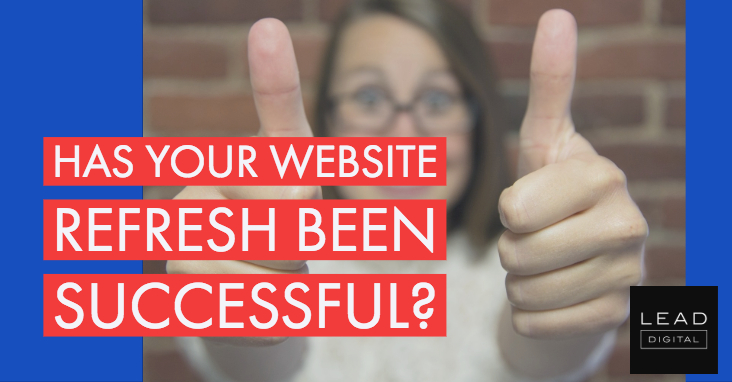
Like maintenance work on your car, a refresh of your organization’s website is one of those tasks that seems to roll around every few years and entail far higher costs than anticipated. However, also like car maintenance, a website refresh is often critically necessary. Your organization’s branding or messaging may have changed, or maybe your site just looks like something that was built on GeoCities in 1995. Whatever the reason, you’ll want to ensure that you’re measuring the results of a website refresh in order to adequately justify the costs.
The most basic, and most powerful, question we can ask is “is our site better?” The problem of course is that that’s an incredibly vague question. What do we mean by “better?” Typically, we’re looking at KPIs like page views, number of sessions, bounce rate, time on page, exit rate, conversion rate, etc. The sort of numbers you can get from any basic web analytics tool like Google Analytics. I typically regard these numbers as “surface-level metrics;” they provide a good starting point but don’t say much about whether visitors are deriving value from your website.
To illustrate, page views and the number of unique sessions help you understand site traffic. However, they don’t say anything about how “good” your site is, just how many eyeballs you’re getting and perhaps how well you’re doing in terms of SEO. Bounce rate, time on page and exit rate go a little deeper. These metrics can point to the quality of content on your site or, more directly, to whether the content on your website adequately meets the expectations of visitors. For example, if visitors to “bike.com” are expecting to find information about motorcycles but discover content focused on bicycles, they are likely to leave disappointed, and in a hurry. Unfortunately, depending on how engagement is defined in Google Analytics, metrics like bounce rate can result in both false positives and false negatives, leading marketers to draw the wrong conclusions.
Ultimately, one of the best KPIs to consider is conversion rate: the percentage of visitors that complete the action we want them to. This could refer to signing up for a demo, downloading a trial, joining a mailing list, etc. To quote WordStream, “a high conversion rate is indicative of successful marketing and web design: it means people want what you’re offering, and they’re easily able to get it!” More than anything else, conversion rate is the KPI that marketers look at when assessing website performance. – Read more



